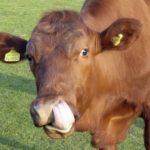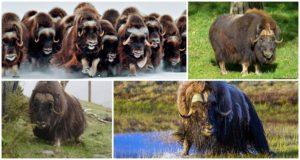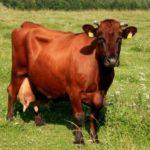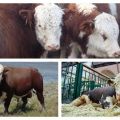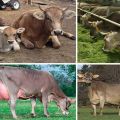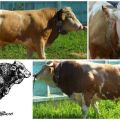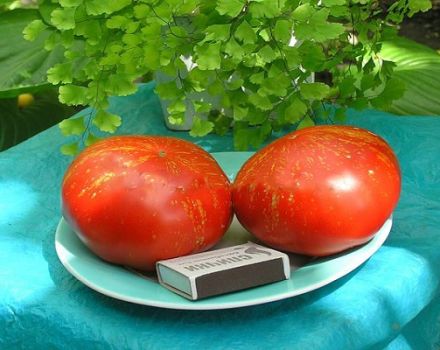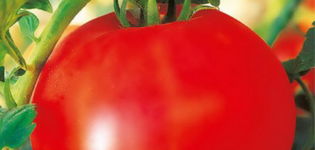Description and characteristics of cows of Krasnogorbatov breed, their content
The history of the Krasnogorbatovskaya breed of cows begins in the 19th century, when it was bred in one of the villages of the Nizhny Novgorod region. Local animals were crossed with imported Tyrolean animals, which were distinguished by high milk fat content. The best representatives were selected from the offspring, the selection was carried out not only by productive qualities, but also by color. The new breed was registered in 1926.
Description and characteristics of the breed
The color is red, the hair of bulls on the head and neck is dark, almost black. Some animals have marks on the belly and udder, sometimes at the end of the tail. The height at the withers in the breed is 120-124 cm, the body length is 145-155 cm. Krasnogorbatovskie cows are of a strong constitution, harmonious constitution, with a light but strong bone and moderately developed muscles. They have a broad back, a short head, light horns with dark tips, and short legs. The udder is of medium size.
Animals of the Krasnogorbatovskaya breed in adulthood weigh:
- bulls - 650-900 kg;
- cows 400-650 kg.
Calves are born with a weight of 23-29 kg, by six months their weight is already 150-165 kg. Animals gain up to 1 kg of weight every day. Slaughter meat yield from adults is 54-62%.
Cows of this breed are bred in the Nizhny Novgorod and adjacent regions, in Ukraine. Animals are able to adapt to climatic conditions, have strong immunity, eat food well, are unpretentious, and are resistant to diseases. They are easy to feed, retain their fatness for a long time even when fed with feed of poor quality.
Advantages and disadvantages
Advantages of the red Gorbatov breed: adaptability to conditions of detention, health (rarely get sick with tuberculosis, leukemia, brucellosis), the ability to feed on free grazing. They give fat milk, from which hard cheeses and tasty cream are especially successfully obtained.
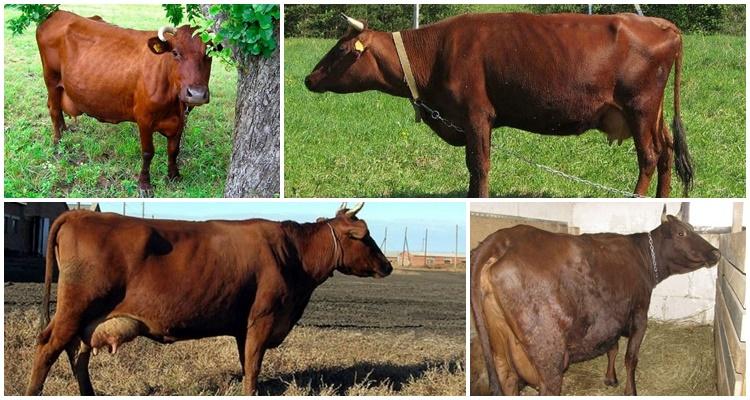
The disadvantages of this breed of cattle relate to the exterior: the animals have a slightly drooping sacrum, a slightly sagging back, not too powerful muscles, poorly developed middle lobes of the udder.
Maintenance and care rules
The rules for caring for cattle of the Krasnogorbatovskaya breed are similar to the conditions for keeping other types of livestock.Animals need spacious warm stalls, a walking area if there is no pasture. Each animal needs to be provided with food, water every day, milking queens need to be milked every day.
Walking area
It is advisable to equip not only the barn, but also a corral next to it, where animals can walk every day. It should be fenced in, of sufficient area to give all the cows a place to rest.
How to equip a barn
Each individual needs an area of at least 16-18 sq. m. Building a barn for cows is best made of wood, it will be warm and durable. The floor should be slightly sloped to allow the slurry to drain into one place. It is usually made of concrete, since the floor is easy to clean, but not the best option for the animals themselves. It is desirable that the floor, like the walls, be wooden.
According to the standards for keeping cattle, 6 square meters should be allocated for 1 individual. m. area, for a cow with a calf - 10 sq. m. So much is necessary so that the animals do not feel discomfort, can lie freely, move around inside the stall.
Keeping on a smaller area will lead to a deterioration in the health of the livestock, a decrease in immunity, diseases, a decrease in productivity, and product quality.
The barn must have windows with vents for natural lighting and ventilation. In the evening, you need to turn on the light in the barn. Each stall must be equipped with a feeder and drinker. The walls of the barn should be disinfected - whitewashed with lime 2 times a year.
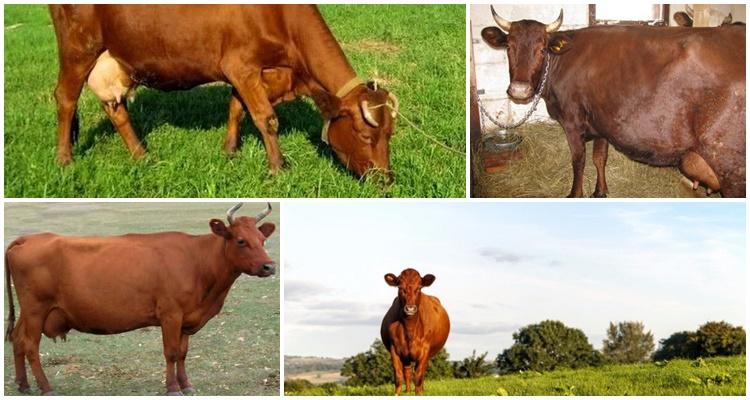
Conditions of detention
Caring for red Gorbatov cows is no different from the rules for caring for other breeds. For each individual, you need to equip a comfortable stall where the cows will rest. If there is no pasture, be sure to build a walking area.
So that animals do not get sick, they must live in warmth, dryness, breathe fresh air.
Cleaning the barn
They are cleaned in the stall every day while the cows are in the pasture. Change the litter with manure, lay a new layer. Leftover leftovers must be removed from the feeders so that they do not rot and spoil new food.
How to prepare for milking
The cow can be tied before milking, and the tail can also be tied to the hind limb. Prepare a clean milk container and a container of water for washing the udder in advance. Before milking, wash the udder with water, wipe it off and do a light massage for 1 min. At this time, it is easy to see if there is any seal or damage on it. Cows should be milked 2 or 3 times a day, the first milking should be at 5 a.m., in the evening - no later than 7 p.m. High-yielding and recently calved cows can be milked more often - up to 5 times a day.
How to feed Krasnogorbatov cows
The diet of Krasnogorbatov cows should be complete, balanced in nutrients. Only by receiving all the necessary ingredients will cows be able to grow properly, gain weight, bring calves and give milk. On a meager diet, the return will be minimal.
Summer
In summer, the main food for cows is fresh grass. If there is no pasture, it is mowed and distributed to animals. They are additionally fed with concentrates. There is a complete feed for cows that can be fed all year round, but such feeding will not be cheap.
In winter
In winter, they feed with hay, grain, root crops, silage, straw. All feed that is intended for a cow for a day should be divided into 2-3 times, distributed in portions in the morning, at lunch and in the evening, for newly calved cows - 4 times. Grain and succulent feed should be distributed in 1 and 2 feedings, roughage - 3 times a day. First they give concentrates, then juicy and roughage.

How to drink
Animals are watered after feeding, also 3 times a day.The water should not be too cold, the liquid is poured into a drinker or a bucket, make sure that the animal is drunk and only after that is removed.
Breeding the breed
The percentage of Krasnogorbatov cows in the total number of livestock is small, the breed is not considered popular. To obtain purebred offspring, you need to keep pedigree bulls and cows on the farm. The male can be left with females in the common herd for insemination.
Heifers can happen at the age of 14 months, subject to normal development and weight. Usually, pregnancy and calving in cows are easy, calves are born healthy. They successfully inherit breed traits, such as resistance to diseases, productivity, milk fat content, unpretentiousness, which are considered valuable traits for growing in a household.
Diseases
The immune system of cows of this breed is strong, so animals rarely get sick. They are resistant to serious diseases of cattle, which can infect whole herds in livestock farms. However, the health of animals also depends on how they are kept, how they are fed, how they are looked after. With insufficient or poor care, any individual can get sick, infect the livestock. Treatment of diseases should be carried out immediately; to reduce the likelihood of infections on the farm, it is necessary to vaccinate against common bovine diseases and carry out planned preventive measures.
Timely care, regular cleaning of the premises, removal of manure, adequate feeding and clean water, daily exercise in the fresh air helps to prevent diseases. Sick animals must be kept separately, as well as new individuals recently entered the farm.
Krasnogorbatovskaya breed, although it is not considered a leader among cow breeds, will be of interest to those who keep a cow for their own needs or to farmers with a small number of cattle. These are animals of above average size, both meat and milk can be obtained from them. With proper care and competent organization of the content, Krasnogorbatov cows can make a profit, which is the purpose of their breeding.
